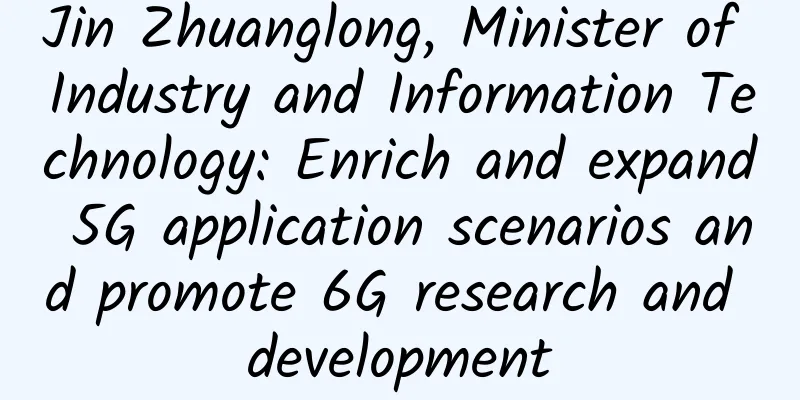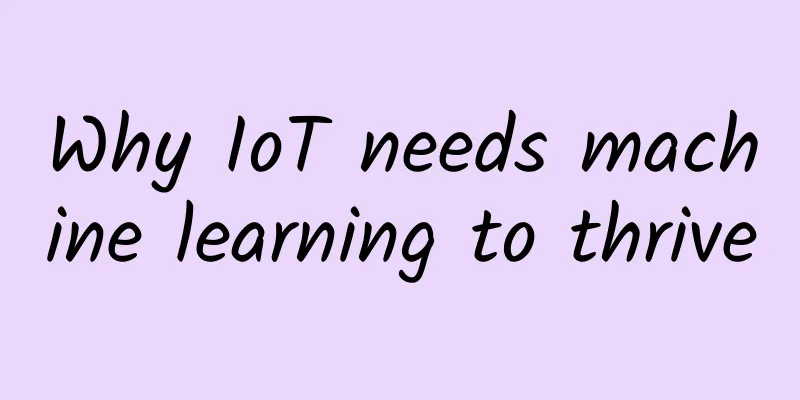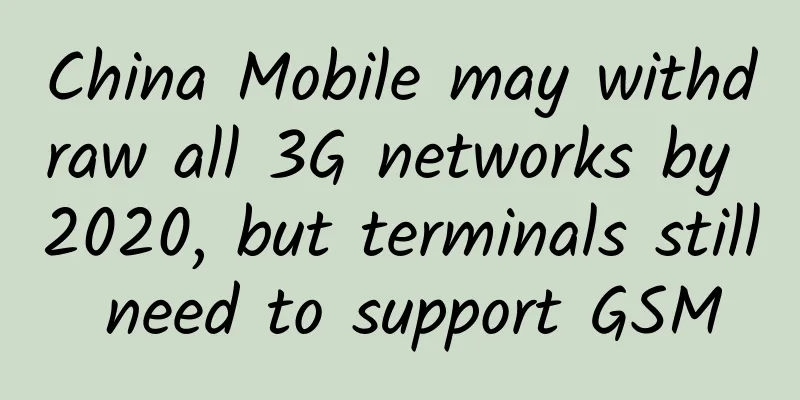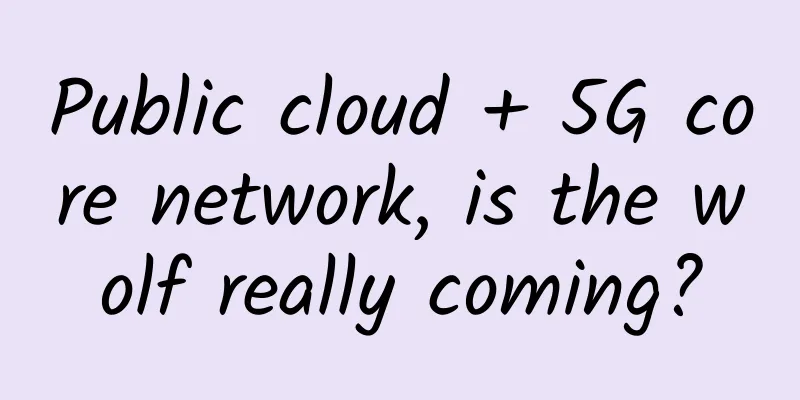Architecture design of MQTT messaging platform for 10 million-level Internet of Vehicles
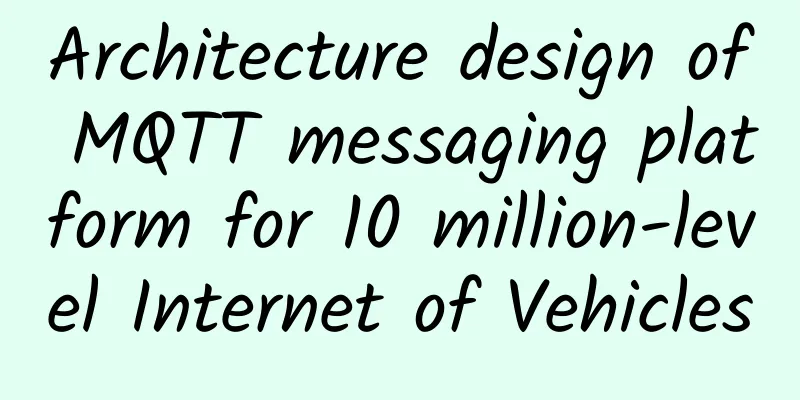
PrefaceWith the advancement of the new four trends (electrification, intelligence, networking and sharing) in the entire automotive travel field, various automobile manufacturers are gradually building a car networking system with intelligent driving and intelligent networking as the core. The new generation of car networking systems has put forward higher requirements for the platform architecture of underlying message collection, transmission and processing. In the previous article of this series, "MQTT Protocol in IoV Scenarios", we have mentioned that MQTT protocol is currently the most suitable communication protocol for building IoV scenario data platforms. Based on this, in this article, we will continue to discuss MQTT message collection and transmission in IoV scenarios, and how to build a 10 million-level IoV MQTT message platform, in order to provide a platform architecture design reference for enterprise users who are currently engaged in IoV business. The foundation of Internet of Vehicles: message collection and transmissionEvolution of Internet of Vehicles Transmission ProtocolsAs we all know, vehicle-to-everything (V2X) refers to the interaction between vehicles and clouds, vehicles and networks, vehicles and vehicles, vehicles and roads, vehicles and people, vehicles and sensor devices, etc., and a dynamic mobile communication system that realizes communication between vehicles and public networks. It is a heterogeneous communication network established to meet the efficiency, safety, management and other elements in every link related to the vehicle. The communication protocol running in it has become the key and core of the construction of the vehicle networking system. In the course of the development of the Internet of Vehicles, there are two main mainstream communication technologies that have promoted the overall development of the Internet of Vehicles:
The competition between DSRC and C-V2X technologies is very fierce, and both hope to become the mainstream Internet of Vehicles communication standard. At present, my country has the most complete 5G communication network infrastructure, so it is more inclined to adopt C-V2X (LTE-V, 5G-V2X) communication technology, and realize the new generation of Internet of Vehicles architecture based on autonomous driving through the systematic construction of V2X vehicle-road system + single-vehicle intelligent system. The significance of message platform construction for the Internet of VehiclesAs the construction of the Internet of Vehicles develops rapidly, all OEMs have reached a consensus: the purpose of building the Internet of Vehicles is not to connect for the sake of connecting, nor for the sake of in-vehicle entertainment, but to connect for data. With the Internet of Vehicles, there is data. With data, supplemented by a complete data governance and application system, there is everything. The target data of this business is not limited to the relevant data on the vehicle side. In the V2X framework, it is necessary to solve the interconnection between vehicles (V2V), vehicles and roads (V2R), vehicles and networks (V2I), vehicles and clouds (V2C), vehicles and people (V2H), etc., to achieve comprehensive data collection and analysis for vehicles, roads, clouds, networks, and people. The C-V2X protocol and communication method based on 5G provide basic capability guarantee for the construction of the entire system. From traditional OTA applications to smart cockpits, high-precision map adaptation, centimeter-level positioning, long-term connection between vehicle and computer, mobile phone message collection, vehicle-road cloud map, vehicle-road collaboration and many other new intelligent application scenarios, the demand for message platforms and data processing systems in the Internet of Vehicles business has expanded from the original vehicle-cloud to the overall architecture construction of man-vehicle-road-network-cloud, which has also put forward higher requirements for the construction of the entire message platform. How to build a message communication and transmission system architecture with massive connections, high concurrent throughput, and low latency to ensure the ubiquity, convenience, high availability, reliability, security, and high concurrency of the entire system has become the key to the construction of a new generation of Internet of Vehicles systems based on autonomous driving and vehicle-road collaboration scenarios. Architecture design of a 10 million-level Internet of Vehicles messaging platformNext, we will take EMQ's Internet of Vehicles messaging platform and data processing overall solution as an example to introduce how to build a 10 million-level Internet of Vehicles messaging platform. Business Challenges(1) Secure access to vehicle computer, road test unit and mobile phone system The vehicle side needs to cover new vehicle-connected services such as vehicle data reporting, POI distribution, file push, configuration distribution, message push, and operation care. The massive message topics generated need more secure and stable access and transmission to achieve message subscription and publishing. The road side needs to achieve secure access to roadside RSU, message collection and transmission, and map data transmission. (2) Real-time and reliability of large concurrent message delivery Application scenarios such as high-precision maps, centimeter-level positioning, and vehicle-road collaboration all require millisecond-level low-latency and highly reliable transmission capabilities for massive vehicle-road map messages. The message processing platform needs to have high performance, low latency, and high reliability to support tens of millions of connections and millions of concurrent business scenarios. (3) Rich application scenario integration In the Internet of Vehicles system with autonomous driving as the core, a message platform is needed to connect various applications based on people, roads, maps, and clouds. The vehicle-side data is connected to application scenarios such as high-precision maps, centimeter-level positioning, vehicle-road collaboration, and mobile phone connections through the message platform. The consumption supply of applications is guaranteed through the message platform, and a high-performance, low-latency, and highly reliable data architecture is provided. (4) Massive data storage, processing and distribution After massive IoT data from people, cars, roads, clouds, maps, and networks are collected, it is necessary to conduct full life cycle management of the access, storage, processing, and distribution of these large-scale real-time data streams, provide applications with database support for dynamic and continuous data streams, and support applications to make in-depth use of Internet of Vehicles data to serve consumers and make business decisions. Total SolutionIn the solution, we mainly use EMQ's cloud-native distributed IoT access platform - EMQX, to achieve data connection, movement and processing between the vehicle side, the human side and the road side in the Internet of Vehicles system. EMQX's integrated distributed MQTT message service and powerful IoT rule engine can provide a basic capability base for high-reliability, high-performance real-time IoT data movement, processing and integration, helping enterprises quickly build IoT platforms and applications for key businesses. (1) Message processing on the vehicle side EMQX uses the MQTT protocol to access the vehicle connection system. The vehicle-side is connected to the EMQX distributed cluster through load balancing. The horizontal expansion capability of EMQX can achieve data communication capabilities of tens of millions of vehicle-side connections and millions of concurrent responses. Through the rule engine, it can achieve massive message bridging message queues, persistent warehousing, offline message storage and other capabilities in one stop, while providing rich API atomic capabilities northbound integration. In terms of security, EMQX not only supports TLS/DTLS or GMSSL security protocols to ensure system reliability and stability, but also provides multiple protection mechanisms such as heartbeat monitoring, will messages, QoS levels, etc., and realizes real-time, secure and reliable vehicle-machine message communication in a complex network environment through offline message storage. (2) Message processing for people and roads EMQX provides a message collection and processing platform for mobile APP, RSU and other terminals for people and roads. Based on the 5G network slicing capability, ultra-low latency traffic information services are achieved through the nearby access of personal terminals and roadside units. Through protocols such as MQTT, the road condition information perceived by people and roadside facilities is pushed to the cloud control platform, and the cloud control platform integrates V2X algorithms to realize intelligent traffic scenarios such as road collaborative perception, safety reminders, and remote collaborative control. In terms of security, it supports international standard TLS/DTLS encryption or national secret algorithm GMSSL encryption, and ensures the secure communication of the human-vehicle-road information system by expanding the PKI/CA certificate authentication system. Tens of millions of messages access framework modelFor the next generation of Internet of Vehicles scenarios, the reference architecture of EMQ's overall message access and data processing platform with tens of millions of connections and millions of concurrent connections is as follows:
Through the above reference framework, EMQ can achieve the business needs of tens of millions of connections and millions of concurrent throughputs in the Internet of Vehicles scenario through the EMQX cloud-native distributed IoT access platform. Tens of millions of message access testsTest environment and purposeA car company plans to verify the following capabilities of the EMQX cluster based on the test environment in the Internet of Vehicles scenario, and prepare the corresponding technical architecture and capability support for subsequent business growth:
In addition, after completing all the above tests, we will continue to explore the maximum message sending and bridging throughput that can be supported under the current configuration with 10 million concurrent connections and forwarded to Kafka (increase the client message sending frequency according to the EMQX cluster resource usage), and test the maximum message throughput that meets QoS 2 and an average response time of less than 50 milliseconds under 10 million connections. Test PreparationThe client connects to the load balancing ELB through TLS encryption, then terminates TLS on the client in HAProxy, and finally connects to the EMQX cluster through TCP. By terminating TLS on HAProxy, the support capability of the EMQX cluster can be improved. In this deployment mode, the processing capability of EMQX is exactly the same as that of the client directly connecting through MQTT TCP. On the other hand, compared with MQTT TCP connection, the client also consumes more resources through TLS connection. The scale of this test is tens of millions, and the number of test machines required is large. In order to reduce the required test resources without affecting the test objectives of the EMQX cluster, this test will directly use TCP connection. Test scenarioTest ResultsThe following are the results of this test: summaryAs shown in the above results, under the current deployment architecture, the car company's verification requirements for 10 million concurrent connections + 200,000 messages bridged to Kafka, message broadcasting, and 3 million instantaneous concurrent connections can be met. In the exploratory test, the maximum TPS of 1.2 million messages (QoS 0, payload 1kB) was tested under 10 million connections. The test lasted for 10 hours and the EMQX cluster was stable, the CPU idle was as low as 20%, and the memory usage was stable. From the above, we can see that EMQX has outstanding performance in supporting tens of millions of connections in the Internet of Vehicles scenario, and its architecture is stable and reliable. Introduction and use of stress testing toolsSince this test requires a large number of test machines and their management is complex, the commercial version of EMQ's test software XMeter performance testing platform and JMeter-MQTT plug-in are used for this test.
Final ThoughtsThrough this article, we introduced the design of the MQTT message platform architecture for the Internet of Vehicles with tens of millions of concurrent connections based on the cloud-native distributed IoT access platform EMQX, and verified the performance of the architecture in a scenario with tens of millions of concurrent connections, providing a possible design reference for the construction of a message data platform for the Internet of Vehicles system. As a world-leading IoT data infrastructure software provider, EMQ is committed to building high-performance, low-latency, high-availability and high-reliability products, providing overall solutions for message collection, mobility, processing and analysis for the new generation of Internet of Vehicles systems, and providing infrastructure service guarantees for the autonomous driving and intelligent connected vehicle businesses of vehicle manufacturers, T1 suppliers, aftermarket service providers, travel service companies and government management agencies, realizing the intelligent connection between people, vehicles, roads and clouds. |
>>: Industry applications are so attractive, so why can’t we get a taste of 5G networks?
Recommend
A Brief Analysis of Web3.0 Technology
Part 01 Web3.0 concepts and features Web3.0 is a ...
Strong partner ecosystem helps Denodo grow in Greater China
Beijing, March 10, 2021 - Denodo, a leader in dat...
Five ways 5G will change manufacturing
5G could help realize the ideal of modular factor...
Teach you how to distinguish inferior cables
1. The harm of fake and inferior wires Electric w...
Sharktech: 1Gbps unlimited traffic from $79/month, 10Gbps unlimited traffic from $329/month, data centers in Los Angeles/Denver/Netherlands
Sharktech (also known as Shark Data Center, SK Da...
CloudPowerall: Los Angeles/Hong Kong CN2 GIA annual payment starts from $24.99
CloudPowerall is a relatively new foreign VPS ser...
Design and implement a TCP protocol semi-connected port scanner
A student fan sent a question: From the title, yo...
What can 5G messaging bring to industry customers?
5G messaging is planned and built based on the GS...
[Closed] NextArray: $1.09/month KVM-1GB/10GB/1TB/Dallas Data Center
[Closed] NextArray is a foreign hosting company fo...
What exactly are CPU, GPU, TPU, NPU, etc.?
[[373720]] CPU stands for Central Processing Unit...
+See the future with intelligence! In 2019, Huawei Cloud will let you see a different intelligent cloud
[51CTO.com original article] If we were to select...
Urgent reminder: DediPath officially announced to run away
We have received the official announcement from D...
HUAWEI CONNECT 2017 is coming, and the digital transformation of the industry will open up new growth space
At the 2017 Huawei Analyst Conference in April 20...
It is estimated that by 2025, China's 5G users will reach 739 million
In terms of annual mobile data consumption, it is...
my country's 5G construction and development have achieved remarkable results, and the 6G layout is about to start
At present, 5G, as a global emerging strategic in...



